Category: PAST EXHIBITIONS
EXHIBITIONS
January 8, 2013 — March 3, 2013
The first international museum exhibition of Andy Warhol’s ink drawings from the 1950s is on show at Denmark’s Louisiana Museum of Modern Art. “From Silverpoint to Silver Screen” is a collection of early drawings recently discovered by Daniel Blau. More than 150 of these works will be on public view for the first time in this unmissable exhibition from January 8th – February 21st, 2013.
Hardcover, 280 pages, over 200 illustrations in colour and texts by internationally acclaimed experts: our new publication of Andy Warhol’s drawings from the 1950s is finally available for purchase! The first copies of this outstanding hardcover book will arrive at the gallery next week.
January 11, 2013 — February 16, 2013
“Night and day, he prowled the streets and tall buildings of Manhattan…”
Wanda Rickerby
Daniel Blau is delighted to present an exhibition of vintage prints by renowned American photographer Arthur B. Rickerby (1921 – 1972). Best known for his depictions of New York life and organised sport, Rickerby also covered World War II events in the Pacific under Edward Steichen.
A native New Yorker, he photographed the city all his life – as a United Press employee, a freelancer, and later as one of the prestigious LIFE magazine staff photographers. The variety of subjects he covered is remarkable, from street scenes to union strikes, to President Kennedy and happenings abroad.
This is the first time that these rare vintage prints will be shown in a solo exhibition in Europe, representing the discovery of a historically important photographer who bore witness to many of the great events of the Twentieth Century.
Arthur Burroughs Rickerby was born in New York City in 1921. He began his photographic career while a student at Duke University (Durham, North Carolina), where he documented the campus sports to sell his images to local newspapers. Acme Newspictures (now UPI) noticed him and offered him a job in New York after his graduation. As this coincided with the Second World War, however, he was sent to the Pacific to cover the events under Edward Steichen.
Upon the end of the war, he returned to his job as a photojournalist in New York, recording every aspect of the city and always testing new photographic equipment, such as 35 mm film. He was nominated for a Pulitzer prize for his leadership in the world of news photography. He left United Press to become a freelancer, and as he became better known, was hired by the prestigious LIFE Magazine, with which he shot exclusive stories about president Kennedy. He continued photographing a wide variety of subjects throughout his life.
A retrospective of Rickerby’s work, entitled “The Photography of Arthur B. Rickerby, The UPI and LIFE years, 1941-1971”, toured the USA in the 1990s.
November 9, 2012 — December 22, 2012
After last year’s successful exhibition of affordable photography, the gallery is pleased to present a show of vintage photographs in time for Christmas.
Photography is about collecting. Sometimes the gallery may seem like a museum space, but nevertheless the works on the wall are for sale. This gives visitors the opportunity to participate in the great adventure that is collecting photography. Now more than ever before we have the possibility of finding great works of art at affordable prices. We should remember that the last time such an opportunity arose was in the 1960s, and subsequently the market for 19th Century photography flourished. This time it is the shift to digital photography that brings 20th Century prints to light out of various archives.
It takes foresight to recognise a great work of art as a piece of history when the price tag is only a few hundred pounds. But here in East London the gallery encourages people of every generation to have a look at these one-of-a-kind pieces and develop or begin their own collections.
November 9, 2012 — December 1, 2012
“To see oursels as ithers see us!” Robert Burns, 1786
Daniel Blau Ltd. and Galerie Meyer are pleased to present ALLER-RETOUR, an exhibition of pictures from the Apollo X1 journey to the Moon. These works are arguably the ultimate reflection on the theme “The Journey”, the subject of Photo Saint-Germain-des-Prés 2012. This journey’s departure, destination and return extend beyond space and time into the realm of the unknown.
Space exploration has once again captivated the public with the recent landing of Mars rover “Curiosity”, which has produced unparalleled views of the “Red Planet”. Moreover, the recent passing of Neil Armstrong on August 25, 2012 is a poignant reminder of the monumentality and timeless intrigue of space in relation to mankind. Armstrong, reflecting on his journey to the Moon revealed: “the unknowns were rampant”. Set within the backdrop of the Cold War, with intense political tension between the United States and the USSR, the lunar module dubbed “The Eagle” landed Armstrong and Aldrin – with only thirty seconds of fuel remaining – on the Moon in July of 1969. An estimated 550 million people witnessed this undeniably historic event, as Armstrong and Buzz Aldrin explored the Moon’s surface for the very first time. Photographed over two hours while documenting and sampling the Moon, these original photographs remain the most expensive pictures ever taken in terms of their cost of production.
The “magnificent desolation”, as Aldrin described the surface of the Moon, had been photographed via telescope by Lewis Morris Rutherford in the 19th century. However, these 1969 photographs of an unprecedented clarity, the result of unfiltered sunlight in situ, epitomize the magnificence of space. The glorious nostalgia of this fortunate era is reflected in these incredible photographs.
50 years after the first man orbited Earth, the splendour and sublime quality of these groundbreaking pictures of the Moon continue to evoke wonder.
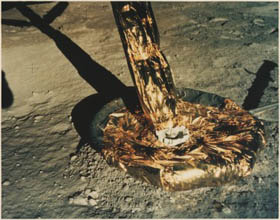
October 29, 2012 – November 23, 2012
A photo is part of reality, or at least a tiny part of it. This reality is always in the past, where it has become elusive for us. The amazing thing about photographs is that they show us something in which we place our faith – we trust the image.
When it comes to photos of war atrocities, death and destruction, the case is even more interesting, as there’s a moral in addition to an artistic aspect. Over the years I have amassed a collection of photos that contain both a particularly high degree of artistic value and a moral message. They were also all printed at the time of being taken, and are thus vintage and display zeitgeist.
For me it is interesting to interpret the past on the basis of the photographs in this exhibition; to align what I see with my own experience or what I’ve previously learned. I get to see something to which I otherwise would not have access. For example, I can still enter the ruined Reichstag in Berlin. These visual experiences imprint themselves immediately and strongly on the viewer. Slowly the artistic quality of these recordings becomes known.
Just to give an example: it must be a great artist who so immortalised the landing of Allied forces as Capa did in his eleven photos. At first glance and without the context they look inconspicuous. However, as we know that they were taken on the 6th of June, 1944 in Normandy they are considered poignant pictures, an intrinsic part of our memory.
Opening/Eröffnung: 26 October, 2012 6-9pm, 27 / 28, 11–6pm
Exhibition/Ausstellung: 29 October – 23 November
October 5, 2012 – November 3, 2012
“In ’74 I photographed the cannibals in New Guinea. They treated me OK but they didn’t make you feel relaxed…I managed to escape unscathed though, I’m pretty good at that.”
A visit to Bailey’s studio. A treasure! A box of Polaroids from 1974.
When visiting an artist as versatile as Bailey, one should always expect the unexpected. Despite this, it was a great surprise to discover a box of Polaroids taken in Papua New Guinea in 1974, fascinating for their subject matter as well as for their artistic merit.
What followed was a happy-dance and a handshake confirming the opening of “Papua Polaroids” on October 4th.
In 1974 David Bailey visited the New Guinea wilderness and pointed his Polaroid camera at the bow and arrow carrying people, resulting in photographic portraits that have been hidden from view in his archive ever since.
Today indigenous peoples are gazed at and possibly even envied by us for the seemingly simpler and more understandable world they inhabit. The nostalgic aura of Polaroid film intensifies this sense of longing for a more natural and primal way of life.
Daniel has long been interested in Oceanic Art. It is therefore a particular pleasure to find this interest mirrored in Bailey’s work of the 70s.
September 14, 2012 – October 19, 2012
These recent drawings combine Neal Fox’s visionary depictions of the debauched and iconoclastic characters whose ideas have helped shape our collective consciousness with vivid colours that enhance the fantastical and psychedelic atmosphere of the images. Drawing on his extensive knowledge of the mythology of pop and consumer culture, Fox’s new drawings are infused with layers of narrative and populated by a vast range of celebrities, lunatics, and geniuses.
In these imagined landscapes Captain Beefheart sells a vacuum cleaner to Aldous Huxley at the Doors of Perception, while elsewhere Jesus is crucified on a McDonald’s sign and popular culture comes to resemble a neon nightmare. We present an exhibition of re-imagined reality and collaged dreams, the familiar made unfamiliar and strange.
September 7, 2012 – September 29, 2012
“There shall be wings! If the accomplishment be not for me, ‘tis for some other. The spirit cannot die; and man, who shall know all and shall have wings…”
Leonardo da Vinci
Daniel Blau presents an extraordinary exhibition of rare NASA photographs and photographic collages of Mars. The collages are composed of vintage silver gelatin prints and are unique works of art.
Until the Mariner 4 probe’s successful fly-by in July 1965, Mars had only been seen through terrestrial telescopes. All of a sudden photographs were transmitted to earth that were of such clarity that we could almost touch the surface of the planet. Viking 1 continued where the Mariner missions left off, and delivered wonderfully detailed photographs of this mysterious planet, named after the Roman God of War and long subject to speculations regarding the possibility of alien life.
What began as a race to put a man on the moon progressed further and further into space, spurred on by limitless ambition and curiosity. These photographs evoke an incomparable time in history when technology was developing at an incredible rate and the impossible became not only possible, but visible for the entire world to see.
July 6, 2012 – July 28, 2012
With NOW! we present an exhibition of vintage 20th century press prints.
We focus the exhibition on events, on stop-the-press snapshots that not only document but define history. There is no motion, only moments in quick succession, and in an age of media saturation we are quick to look at and dismiss newspaper stories and photographic coverage of events, not because images aren’t interesting or important, but because there are too many of them.
The prints in the show are vintage, meaning they were printed at the time when the photograph was originally taken. Most prints are analogue wire- or radio-transmitted images. The resulting hardcopy prints were used for the creation of magazines or newspapers, and were later stored in news archives. Many of the prints have ink stamps and news clippings on the back, and some display airbrushing or crop marks on the front. They have themselves collected history, and over time have borne witness to vast global change and upheaval.
These prints are thus testimony to the events of the past and reliquaries for our changing beliefs. They are valuable due to their status as historical documents, but everyone should be able to own a part of history and their affordability reflects this ideal.
Please join us for the opening of this exhibition on Thursday 5th July from 6 – 9 pm at 51 Hoxton Square.
June 1, 2012 – June 30, 2012
Daniel Blau Ltd. is pleased to present a unique collection of nineteenth century cyanotypes by Georges Poulet, in the first exhibition of its kind in the UK.
French engineer Georges Poulet’s (1848 – 1936) photographs of railway construction in Argentina convey a sense of the pioneering spirit characteristic of the nineteenth century. These cyanotypes depart from customary notions of documentary photography, taking the viewer on an intensely atmospheric journey through the largely unspoiled Argentina of the late nineteenth century. They also reveal a desire to record technological progress in an artistic way. The mysterious blues produced by the cyanotype process create a special ambience, while the captions written elegantly in red ink at the bottom of each photo provide an element of narrative and of contrast.
Scientist Sir John Frederick Herschel invented the cyanotype (more commonly known as the blueprint) in the early days of photography. Engineers and architects used it to reproduce technical drawings, maps and so forth; but artists also employed the technique and its influence is evident in their work.
Poulet employs the advantages of the cyanotype medium: its ability to reproduce reality, and the blue that is an integral part of it. Blue, of course, has a metaphorical dimension, symbolising longing for far-off places. In one of those distant regions we encounter the subject of Poulet’s series of cyanotypes: full of yearning, he shows us the railway in Argentina as in a dream, flooded in a melancholy blue.
Please join us for the opening of this exhibition on Thursday 31st May, 2012 from 6 – 9 pm at 51 Hoxton Square.
Abridged text from “Aurora Argentina”, an illustrated publication accompanying the exhibition and containing a complete catalogue of Poulet’s Argentinian cyanotypes.





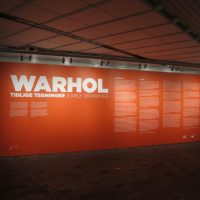
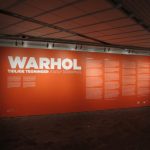
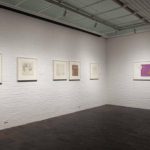
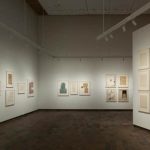

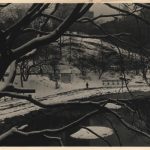
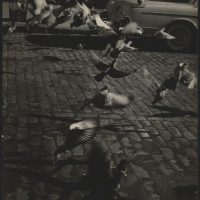
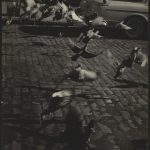
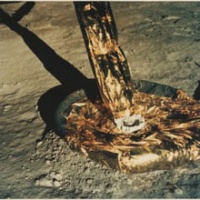
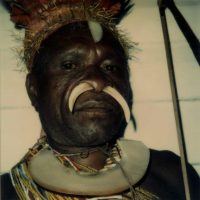
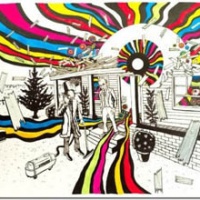
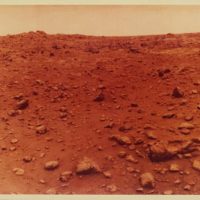
 +49 89 29 73 42
+49 89 29 73 42